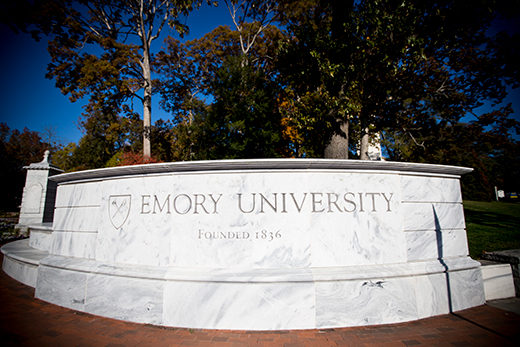Emory University President Gregory L. Fenves gave an update Monday on his plan to analyze the university’s history and reconcile parts of its past with its present day values.
“Last fall, Interim Provost Jan Love and I reconvened the Task Force on Untold Stories and Disenfranchised Populations with a charge to help our university tell Emory’s story with specific attention to enslaved persons with ties to Emory and Indigenous peoples on whose land the campus was built. In April, the Task Force released an executive summary of their findings and put forth a series of recommendations,” said Fenves.
After all of the research and contributions from staff, faculty, students, trustees and alumni, Fenves noted that the university will be taking the following actions: making plans for twin memorials on the Atlanta and Oxford campuses to honor the labor of enslaved individuals who contributed in building up the university, renaming Language Hall at Oxford College in honor of Horace J. Johnson Jr, and renaming the Longstreet-Means residence hall to Eagle Hall.
Fenves mentioned in the message that the University Committee recommended removing certain names on campus as well.
“The Committee recommended removing the names of Atticus Greene Haygood, L. Q. C. Lamar, George Foster Pierce, and Robert Yerkes from honorific placements on campus. I will continue to review the research and seek consultation on these names.”
The Task Force on Untold Stories and Disenfranchised Populations (Task Force) also recommended developing plans to acknowledge the history of the Muscogee (Creek) Nation. Fenves’ message noted them as indigneous people and the university is located on their homelands.
“We will explore the adoption of an official land acknowledgment statement to recognize the university’s location on the homelands of the Muscogee (Creek) Nation. We will also consider the creation of physical reminders and remembrance rituals on our campuses to honor the Muscogee (Creek) Nation and highlight the Muscogee language and culture.”
It seems that what inspired the effort to reconcile the university’s past were the racist images that were found in old student yearbooks. Some of the photos were of white students in blackface, a throwback to the minstrel shows that showcased offensive and ridiculous caricatures of Black Americans. Most of the photos were from the 1960s as mentioned in an article by The Atlanta Journal-Constitution from 2019.
*You may not be able to access the AJC article if you do not have an account, here are some some other links from the Emory Wheel (this one as well, Emory Wheel ) and 11Alive regarding the situation

